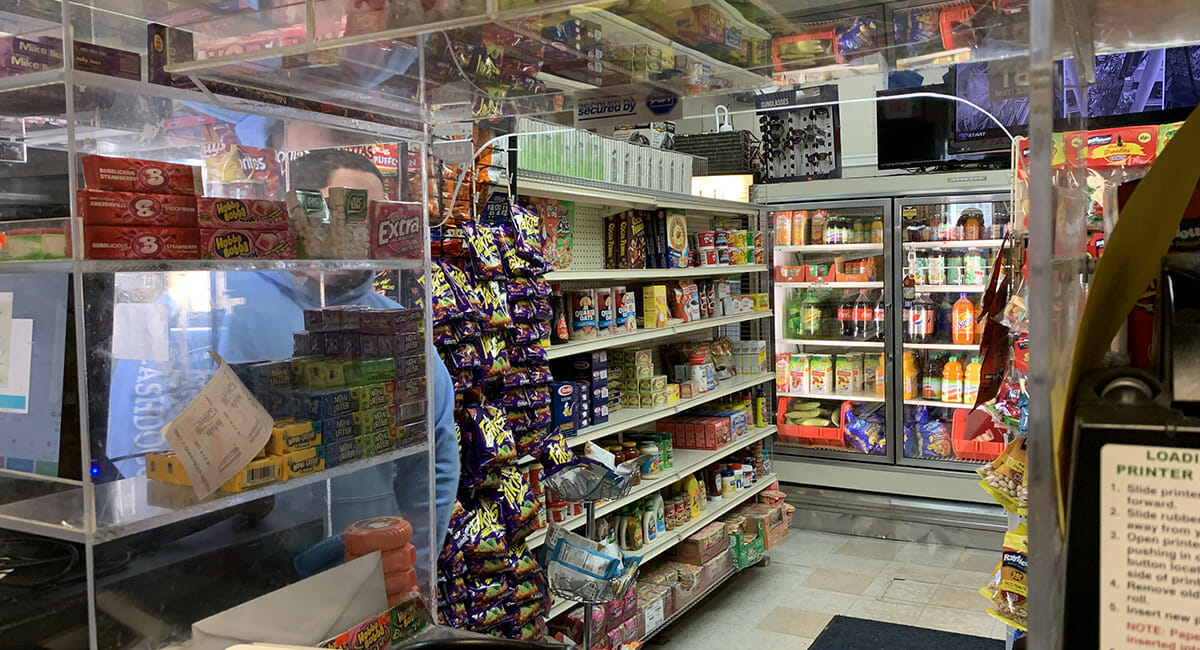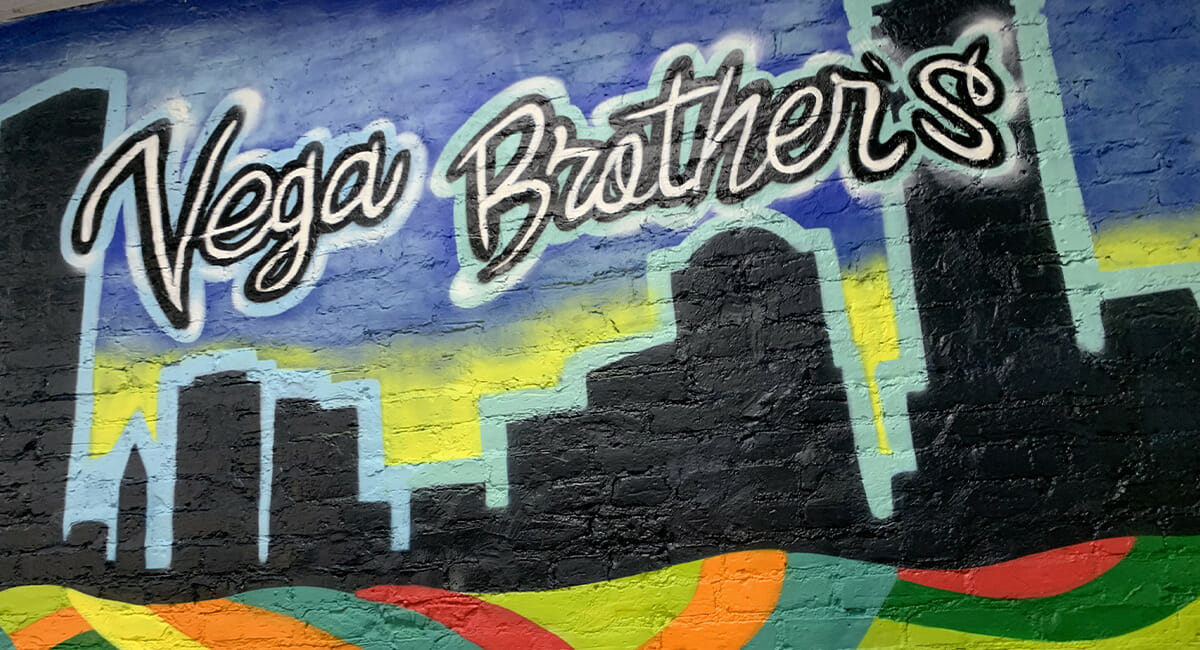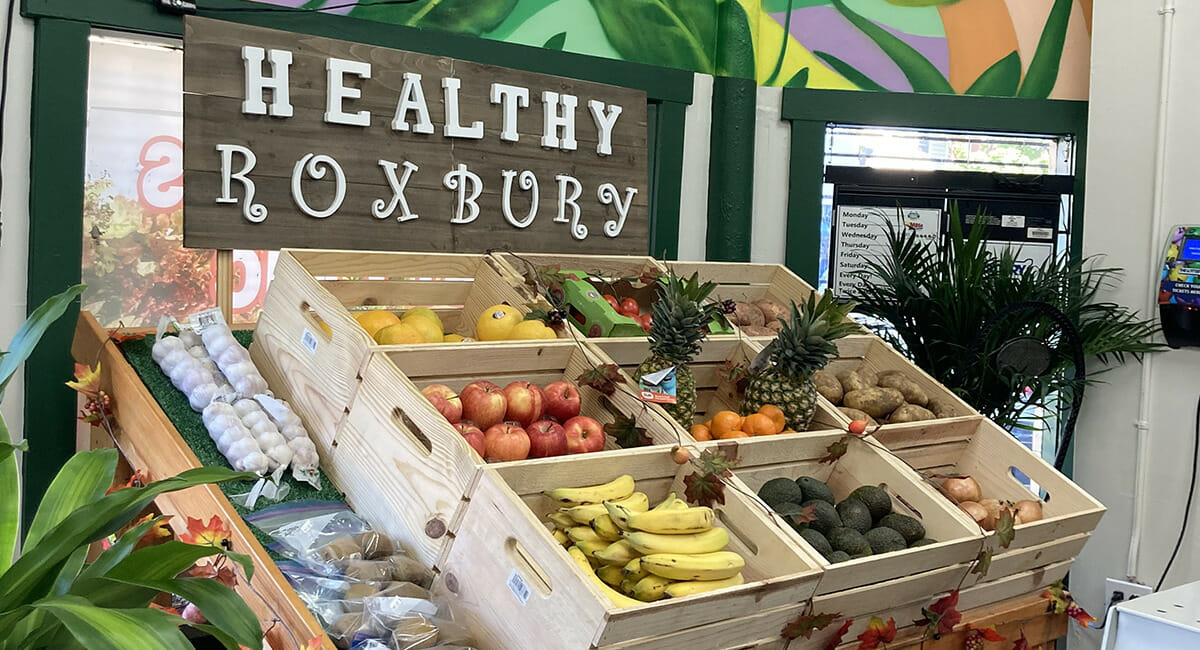The Bodega A Common Space for the Community To Promote Health Equity

By David and Felice Silverman
A “bodega” is much more than a neighborhood grocery store. As Evelyn Brito of Bodega Makeover notes, “Bodegas are small businesses with BIG Impact, they are the heart of the community. They are community centers where people catch up with each other about their families and daily lives.” The Bodega Makeover project leverages the bodega as a community space, to address a critical issue: food deserts and food insecurity.
In 2020, our firm, STA Design, Inc., collaborated with the Bodega Makeover team on their pilot program, the redesign of Vega Brothers in Roxbury, Massachusetts. In doing so, we explored the issue of food deserts, and how to develop solutions for this important common space using community-centered design processes. We reconnected with Evelyn Brito to revisit the project, and understand the lasting community impact, lessons learned, and where support is still needed.
Bodega Makeover’s Mission
Bodega Makeover is a nonprofit organization whose mission is to help solve the food desert and unhealthy eating issues in lower-income communities by promoting healthy food options through the transformation of community bodegas.
Designing spaces for community impact and problem-solving through community engagement are core values of STA Design’s mission. Understanding the context of the food desert issue and the importance of bodegas in the community was the key to the project design and process. Despite the healthy eating craze, with urban farms and rooftop farming being built in every city, bodegas are lagging behind. Research shows that without access to healthy food, these communities suffer from higher rates of diabetes, hypertension, and heart disease. Evelyn notes that “According to the Massachusetts Food Trust Program, more than 80 percent of the city’s population lives in what’s called a “food desert,” defined by the CDC as having limited access to healthy options. Many communities depend on bodegas, but even if there is a bodega, they may not be providing healthy food options.”
Evelyn’s mission is to promote healthier options and to tell the stories of Hispanic / urban communities that have less access to healthy food, while simultaneously connecting families and communities. “As neighborhood demographics change, bodegas (corner stores) tend to be run by the incoming immigrant population, and those communities look to bodegas to supply not just everyday groceries, but also items that fit specific cultural needs and tastes that might not be stocked in major stores. Some bodegas are also experiencing pressure and fear of displacement as a result of gentrification. Seeing how these beloved bodegas are being neglected and experiencing challenging times, I decided to create a television show called Bodega Makeover to bring light to this issue. Bodega Makeover seeks to illuminate the cultural history of these neighborhood hubs and create a path for these businesses to engage community voices. With a sustainable design, wholesome food options, storytelling, and helpful resources, our aim is to keep the community’s heart beating. Do we believe that design has the potential to reduce food insecurity? Yes.”
The Project: Collaborating with the Vega Family
“I walked around the neighborhoods, around different bodegas and went in old-school style and asked them if they were interested – hey do you want a makeover,” said Evelyn on choosing Vega Brothers as the inaugural makeover project.
From the start, and throughout the whole process, collaboration with Javier and Millie Vega was key. We visited the store and talked about the challenges: the store was crowded, and unwelcoming, and there was little opportunity to market healthy foods. Through observation, listening, and inventorying products and shelving, we were able to evaluate product placement and make recommendations about consolidation and overall layout. We proposed lowering shelves, widening the aisles, and incorporating color and bi-lingual signage to make the space more welcoming. Perhaps most importantly, our design located a large new produce section at the front of the store, visible from the front entry as well as from outside. The idea was to make healthy food the first impression. Exterior improvements included the removal of a security grille, and replacement with a decorative grille that would still provide security, but feel more welcoming and consistent with the homes in the community.
Engaging the Community
A space for the community must engage the community. As Evelyn notes, “We knew we had to collaborate with the community and organizations to achieve the best possible outcome for the residents. We planned a block party and asked people in the area what they thought about the design.” At that event, STA shared preliminary designs and an animation video of the design. We also set up a table, with a large board and stacks of sticky notes, inviting community members to share their ideas for what they’d like to see in the bodega. One common theme rang through all the feedback – more healthy food options. The community was ready for the transformation!
“Engagement with neighbors and organizations, in our opinion, is essential for these projects to succeed. In these programs, food partners are crucial collaborators and stakeholders. Because funding for these programs is limited, it’s critical that we use everyone’s time and resources effectively. The Bodega Makeover series aims to foster a robust dialogue in areas where people may be looking for solutions to food insecurity,” said Evelyn.
Building During a Challenging Time
All remodeling and renovation projects are difficult, but this is especially true when one of the resources being renovated is a valuable community asset. Then the unpredictable happened: the pandemic. Construction of the bodega renovations began in 2020. During the early stages of the pandemic, the Vega family was committed to staying open to support their community during this challenging time. Construction schedules and funding also became a challenge, the project was delayed and the design had to be somewhat modified. But the team persevered and completed the project with the same overall design intent. We worked collaboratively to develop options for the highest priorities.

Mural inside Vega Brothers. (Photo/STA Design, Inc.)
Impact and Lessons Learned
It’s been over two years since the Vega Brothers transformation. We looked back with Evelyn to understand how the space is working now that we’ve moved beyond the ribbon-cutting and the store isn’t in the spotlight anymore.
“The makeover of Vega Brothers went well, and healthier food options are now available at the Roxbury location,” noted Evelyn. Community feedback has been overwhelmingly positive, and the space remains clear, easy to navigate, and brighter. The biggest transformation came from locating the produce at the front of the store, where it remains today. Simple tweaks and pivots like substituting plantains and yuca for apples and bananas have helped customize what the community wants to make it their own.
But bigger challenges were harder to overcome. The bodega received a lot of community resources and business support during the construction, (for example, Eversource provided new lighting that will continue to save energy costs), but that level of support across partners has not remained consistent. At the same time, rising costs for food have made it challenging to keep the costs affordable for the community.
The challenges were in fact too great for the family to overcome, and they have now sold the business to another bodega owner. While the renovated bodega will remain an important and impactful resource for the community, it’s unfortunate that the family no longer owns the business after all of their hard work to make the vision a reality. This demonstrates the importance of providing ongoing, sustaining support for community spaces, beyond the ribbon cutting.

Redesigned produce section. (Photo/STA Design, Inc.)
“An idea to take this to the next level is to rethink how we can connect community resources, local farms, and eco-friendly products to bodegas. It also gives us a vision and a plan for building a local food system that is strong, healthy, and sustainable,” said Evelyn.
Just the Beginning
The transformation of the bodega is just the beginning – with the success of this pilot program, Evelyn is now taking Bodega Makeover nationwide.
Evelyne shared, “The possibilities are endless…Our dream is for a reduction of food insecurity in local communities. Food costs are reasonable, and there are resources and food education available. We can all benefit from understanding how bodegas can be a flexible business model. This project can send a clear message to big box retailers that bodega culture is here to stay.”
The Bodega Makeover project was impactful to not only the community but to the STA Design team as well. We learned firsthand the importance of understanding and engaging the community, and how a community effort involves and impacts every person involved. We learned to flow with necessary adaptations – that it’s not important that the final outcome looks exactly as our renderings, but that the core elements of the problem-solving goals are achieved. We learned that donating our time can improve the community outcome, and we have continued to make this part of our mission and practice. Most importantly, we learned to recognize the power and responsibility of our role as designers and encourage the design community to seek out opportunities to drive toward community impact and equity.
